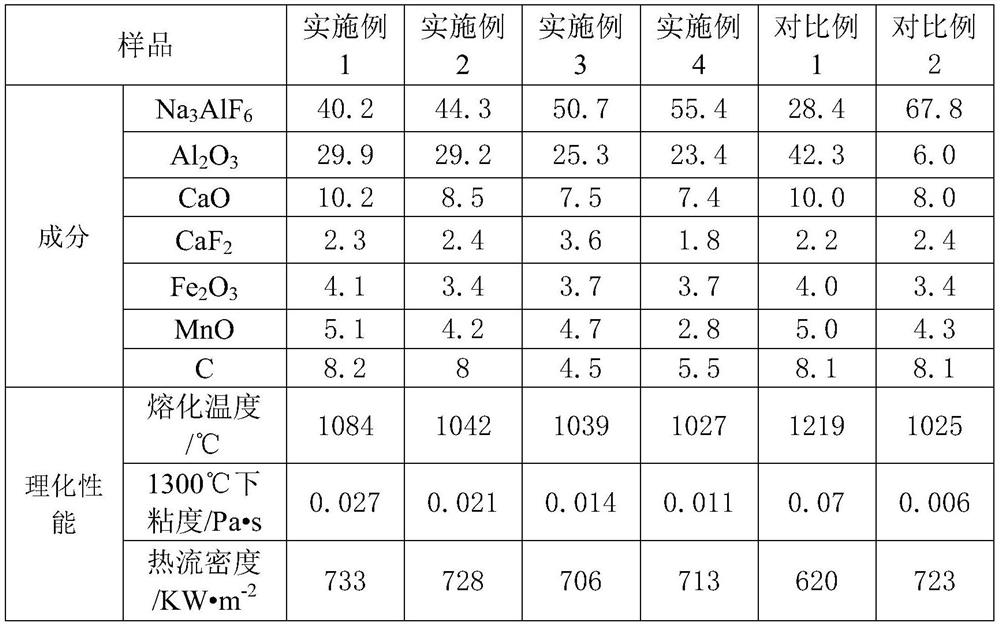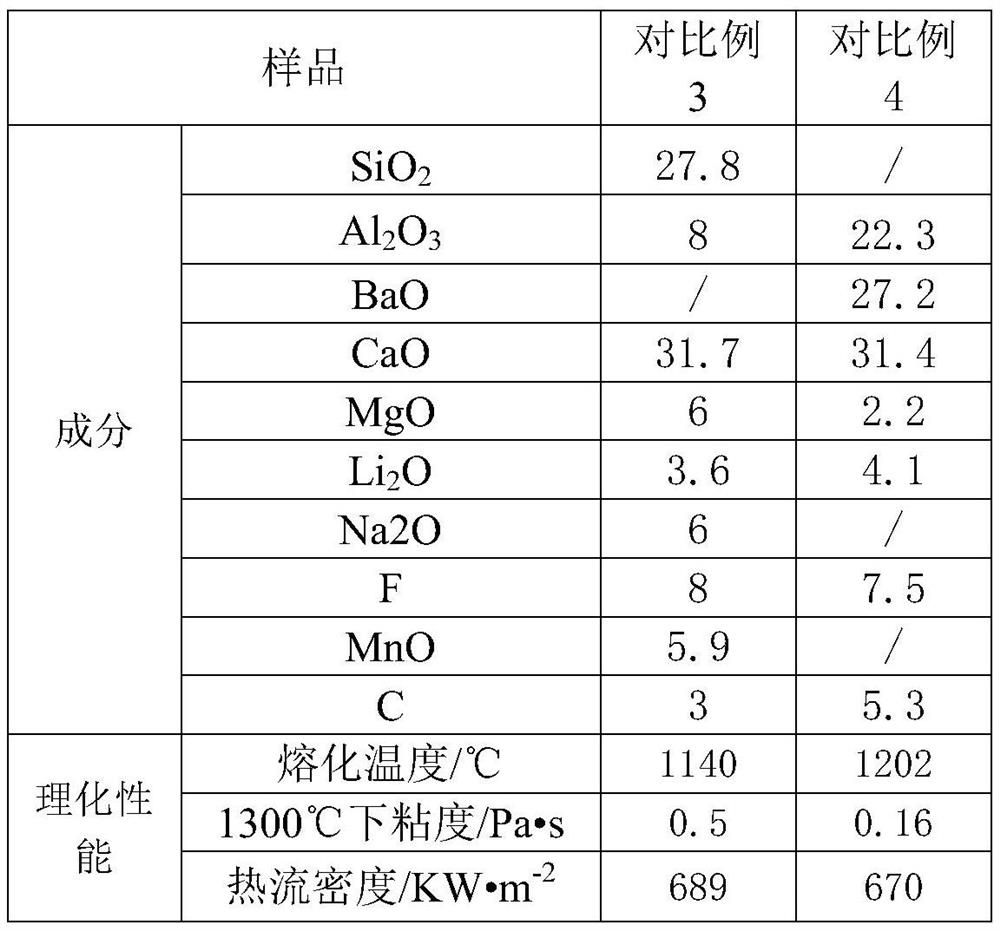A New Type of High Aluminum Steel Mold Flux and Its Application
A technology of mold slag and high-alumina steel, which is applied in the field of iron and steel smelting and continuous casting, can solve the problems of low consumption of slag-forming circles, reaction of mold slag to steel, unfavorable heat transfer of mold slag, etc., to achieve good chemical composition stability, The effect of stable billet quality and stable physical and chemical properties
- Summary
- Abstract
- Description
- Claims
- Application Information
AI Technical Summary
Problems solved by technology
Method used
Image
Examples
Embodiment 1
[0033] Ingredients: Na 3 AlF 6 40.2%, Al 2 o 3 29.9%, CaO 10.2%, CaF 2 2.3%, MnO 5.1%, Fe 2 o 3 4.1%, C8.2%.
[0034] Preparation process: 1) Use cryolite, limestone, bauxite and other industrial raw materials to convert and weigh according to the content of the above-mentioned mold powder components; mix the weighed raw materials and perform mechanical stirring to make the ingredients evenly mixed; 2) mix the Pour the good sample into a graphite crucible and put it into an intermediate frequency induction furnace to heat and melt it, and keep it warm for a period of time to remove volatile matter and uniform slag components; 3) pour the molten slag into water and quench to obtain a glassy sample; 4) put After the glassy sample is broken, add the required amount of carbonaceous material and cellulose binder to make a slurry; 5) send the obtained slurry into a spray particle drying tower for drying and granulation, and the product requires a moisture content of less than ...
Embodiment 2~4
[0037] Ingredients: The components are as shown in Table 1.
[0038] Preparation process: with embodiment 1.
[0039] The main physical properties of mold flux are shown in Table 1.
[0040] Table 1 Chemical composition (wt%) and physical properties of mold fluxes in Examples 1-4 and Comparative Examples 1-2
[0041]
[0042] Table 2 The chemical composition (wt%) and physical properties of the mold flux of the examples and comparative examples 3-4
[0043]
[0044] It can be seen from Table 1 that the melting temperatures of Examples 1 to 4 are 1084°C, 1042°C, 1039°C, and 1027°C respectively, and the viscosities at 1300°C are 0.027Pa·s, 0.021Pa·s, 0.014Pa·s, 0.011Pa·s respectively s, the heat flux is 733KW·m -2 、728KW·m -2 、706KW·m -2 、713KW·m -2 .
PUM
| Property | Measurement | Unit |
|---|---|---|
| viscosity | aaaaa | aaaaa |
| particle size | aaaaa | aaaaa |
| melting point | aaaaa | aaaaa |
Abstract
Description
Claims
Application Information
 Login to View More
Login to View More - R&D
- Intellectual Property
- Life Sciences
- Materials
- Tech Scout
- Unparalleled Data Quality
- Higher Quality Content
- 60% Fewer Hallucinations
Browse by: Latest US Patents, China's latest patents, Technical Efficacy Thesaurus, Application Domain, Technology Topic, Popular Technical Reports.
© 2025 PatSnap. All rights reserved.Legal|Privacy policy|Modern Slavery Act Transparency Statement|Sitemap|About US| Contact US: help@patsnap.com



